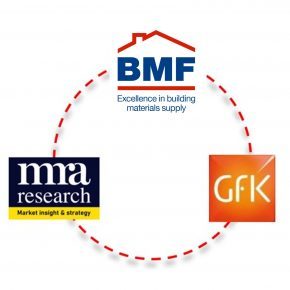
Gearing up for step change in water management
GUEST BLOG: Steve Durdant-Hollamby, MD of Alumasc Water Management Solutions (AWMS), on what the building industry needs to do about climate change, extreme weather and flooding.
The Government and Environment Agency must be relieved that water and wild weather have dropped out of UK headlines.
And regardless of the outcome for Brexit, they’ll be back. If the rate of change is not increasing, the effects of climate change are piling up. Worldwide, water, wild weather and climate change are hogging the news.
Droughts, crop failures and malnutrition in southern Africa. Drought and flooding in California. Fires in Indonesia’s rainforest. Crop failures in the Philippines. They’re aggravated by an El Niño event, the result of increased sea temperatures. It’s one of the most intense in history.
The first three months of this year broke temperature records as the warmest ever measured. Forecasts suggest 2016 may be the hottest year on record, beating the 2015 and 2014’s records.
Spring began an early melt of land ice on Greenland, and an improved computed model that includes the observed collapse of ice cliffs projects much faster ice loss in Antarctica.
A recent paper by renowned climate scientist James Hansen predicted a massive rise in sea level. Now, Rob DeConto, University of Massachusetts-Amherst is publishing a paper which forecasts catastrophic Antarctic melting and supports Hansen’s forecast. “Floating ice shelves around Antarctica will soon be exposed to above zero summer-air temperatures speeding their melt,” DeConto explains. “Once these shelves are gone, the huge ice cliffs that remain will start to collapse.”
If countries meet their Paris agreement pledges, global sea levels could rise one metre by 2100. If emissions keep climbing, levels could increase more than two metres.
Our understanding of the causes and effects of climate change are improving rapidly. The focus now is on establishing what will happen, where and when so we can prepare for it.
So, with more violent storms, heavy rains dropping more in a day then previously fell in a year, and extensive flooding, what should we be doing?
 First, we should not make the problem worse. That means building in the right places in the right way. To improve the housing shortage, the new Housing & Planning Bill currently in consultation could potentially fast-track thousands of new homes through planning, without adequate environmental impact assessment or consideration of sustainable surface water management.
First, we should not make the problem worse. That means building in the right places in the right way. To improve the housing shortage, the new Housing & Planning Bill currently in consultation could potentially fast-track thousands of new homes through planning, without adequate environmental impact assessment or consideration of sustainable surface water management.
We should make sensible provision for upstream water management and pay more than lip service to flood defences, so when the rains come they don’t overwhelm towns, bridges, roads, rail and other infrastructure in their way.
Buildings and the surrounding hard standing should be designed with the capacity and resilience to cope with this additional rainwater, and we should balance the mix of soft and engineered sustainable drainage to achieve practical solutions at any scale. Overall it requires joined-up solutions and integrated thinking from rain to drain.
We’ll have to learn to manage for too little, as well as too much water. A warmer, wetter, more volatile UK will experience drought too.
The climate is not just changing, it’s going through a step change. So we need to gear up for a step change too.
Making the transition to a resilient built environment with resilient buildings, so we can live in a more turbulent wetter climate, depends on supply chains working together, and working with people across and outside the industry.
Think water. Think integrated water management solutions.
Latest news

27th November 2024
BMBI: Q3 Merchant value sales rose +1.7% quarter-on-quarter
The latest total value sales figures from Builders Merchant Building Index (BMBI) show that sales for Q3 2024 were down -2.6% compared to Q3 2023.
Posted in Access Control & Door Entry Systems, Architectural Ironmongery, Articles, Bricks & Blocks, Building Associations & Institutes, Building Industry News, Building Products & Structures, Building Services, Concrete, Cement, Admixtures, Doors, Health & Safety, Information Technology, Interior Design & Construction, Interiors, news, Paints, Paints, Coatings & Finishes, Research & Materials Testing, Restoration & Refurbishment, Retrofit & Renovation, Security and Fire Protection
27th November 2024
SWA guides on the installation of steel windows and doors
The Steel Window Association has developed a series of fact sheets; all are viewable and downloadable here. The following is a synopsis of the installation fact sheet which has been compiled by the industry’s experts.
Posted in Articles, Building Industry News, Building Products & Structures, Building Regulations & Accreditations, Building Systems, Doors, Glass, Glazing, Innovations & New Products, Publications, Research & Materials Testing, Restoration & Refurbishment, Retrofit & Renovation, Steel and Structural Frames, Windows
27th November 2024
Abloy electronic access control: Ensuring safe escape door compliance in schools
Paul Nicholas, at Abloy UK, discusses the importance of escape door compliance in schools, and specifying the correct electronic access control solution to ensure life safety.
Posted in Access Control & Door Entry Systems, Architectural Ironmongery, Articles, Building Industry News, Building Products & Structures, Building Regulations & Accreditations, Building Services, Doors, Facility Management & Building Services, Health & Safety, Innovations & New Products, Posts, Retrofit & Renovation, Security and Fire Protection
27th November 2024
Hambleside Danelaw Top 5% in EcoVadis Assessment
Hambleside Danelaw has completed the EcoVadis assessment process, being awarded a Gold medal, categorising the company in the Top 5% of all companies in the EcoVadis database over the last 12 months.
Posted in Articles, Building Associations & Institutes, Building Industry News, Building Products & Structures, Building Regulations & Accreditations, Building Services, Drainage, Guttering, Soffits & Fascias, Lighting, Restoration & Refurbishment, Retrofit & Renovation, Roofs, Site Preparation, Sustainability & Energy Efficiency, Walls, Waste Management & Recycling
 Sign up:
Sign up: